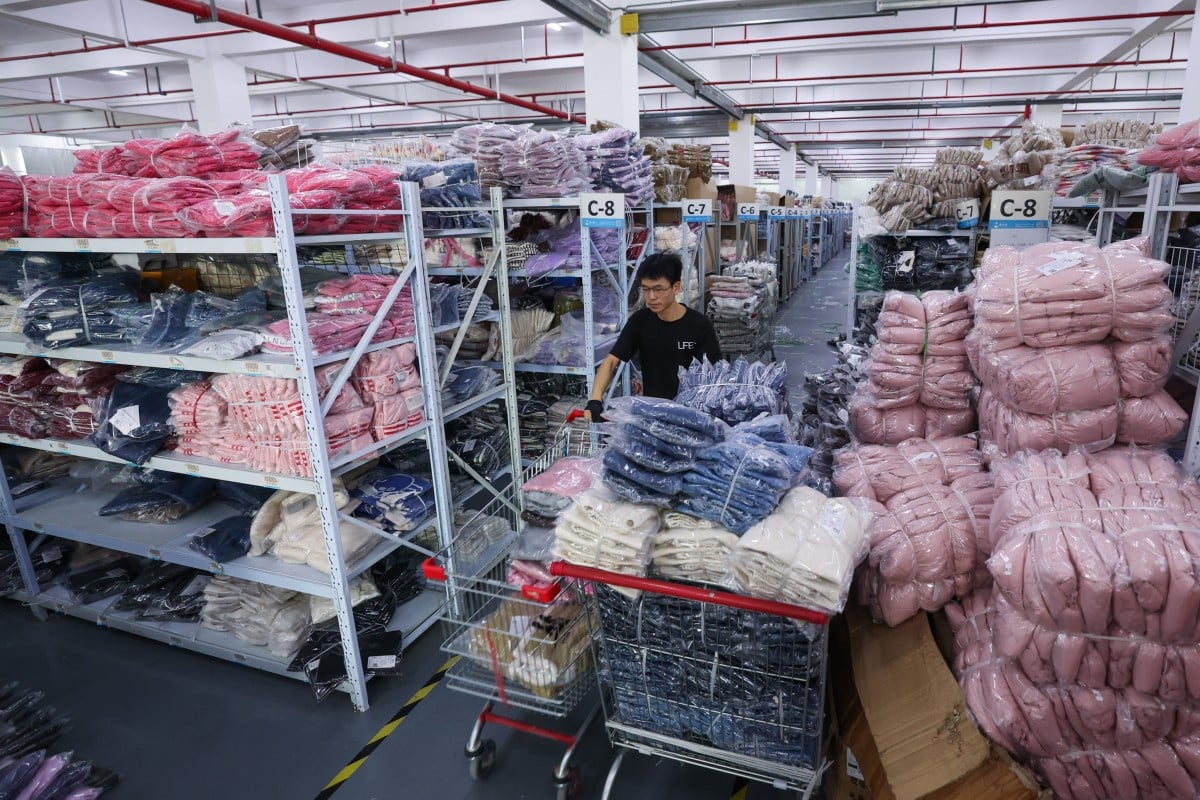Beijing resident Joe Zhou’s evening was interrupted by an unexpected sight: his apartment door was nearly obscured by a towering stack of packages. Having ordered nearly every item needed for his newly renovated home online, from an oven to a coffee maker and various furniture pieces, Zhou’s experience exemplifies a growing trend across China. As the nation’s courier sector continues to evolve alongside the exponential rise of e-commerce, scenes like Zhou’s are becoming increasingly commonplace.
On Tuesday, the State Post Bureau announced a significant achievement in the country’s logistics industry. More than 100 billion parcels had been delivered within this year, reaching this landmark 71 days earlier than in 2023. This figure translates to an average of 71.43 packages per person, or a staggering 5,144 parcels dispatched every second. In total, about 440 million packages traverse China daily. The surge in delivery volume highlights the country’s status as the world’s largest e-commerce market, a position it has maintained with impressive growth.
Recent data from the State Post Bureau underscores the record-breaking nature of this achievement. Peak daily parcel volumes have surpassed 580 million, monthly averages now exceed 13 billion, and monthly revenue has topped 100 billion yuan (approximately US$14 billion). These figures not only mark new highs but also reflect the relentless pace of China’s e-commerce expansion.
Subscribe to the Ex-works24/7 newsletter
China’s dominance in the global e-commerce landscape is underpinned by major players such as Alibaba, JD.com, and Pinduoduo (PDD), all of which have become household names. According to the Ministry of Commerce, online retail sales in China hit 15.4 trillion yuan (US$2.1 trillion) in 2023, marking an 11 percent increase and solidifying China’s leading position for the 11th consecutive year. However, the rapid growth in parcel deliveries has not been without challenges, particularly for courier companies.
The competitive landscape has intensified as firms vie for market share, leading to a fierce price war that has squeezed profits. Many couriers have slashed prices to attract customers, but this strategy has had adverse effects, including pushing smaller and medium-sized companies to the brink and diminishing overall industry profitability. Major Chinese courier companies like STO Express, Yunda, and YTO have reported declines in revenue per parcel in recent years.
Adding to the complexity, the rise in parcel volume is accompanied by a significant increase in product returns. Reports indicate that return rates for some products, particularly women’s clothing, can be as high as 80 to 90 percent during peak shopping seasons. For instance, Cherry Wang, a resident of Chengdu, reveals her shopping habits: “During big sales, I might spend around 2,000 yuan and return about 1,000 yuan worth of items. Even when I’m not shopping heavily, my return rate remains around 50 percent.”
This high return rate, especially prevalent in categories like women’s fashion, contributes to the growing volume of parcels processed by couriers and further complicates the logistics landscape. As customers increasingly return items, the efficiency and cost-effectiveness of parcel handling become critical concerns for the industry.
The courier sector’s expansion is not solely driven by urban demand. Improvements in transport infrastructure, particularly in rural areas, have played a crucial role. The Ministry of Transport reports that China has established over 1,200 county-level public delivery service centers and more than 300,000 logistics service stations in villages. This development has led to a tenfold increase in parcel volumes collected and delivered in rural regions over the past decade.
Furthermore, courier companies have made substantial investments in technological and logistical advancements. In less densely populated western regions, where delivery times have historically been longer, advancements in infrastructure and technology have significantly reduced transit times. Packages that once took a week to reach their destination can now arrive in as little as two to three days.
As China continues to lead the global e-commerce market with its innovative logistics solutions and expansive courier networks, the sector’s growth is likely to persist. The country’s ability to handle an unprecedented volume of parcels while managing the complexities of returns and competitive pressures will be crucial in shaping the future of its courier industry. For residents like Joe Zhou, the burgeoning convenience of online shopping and efficient parcel delivery is set to become an even more integral part of daily life in China.




